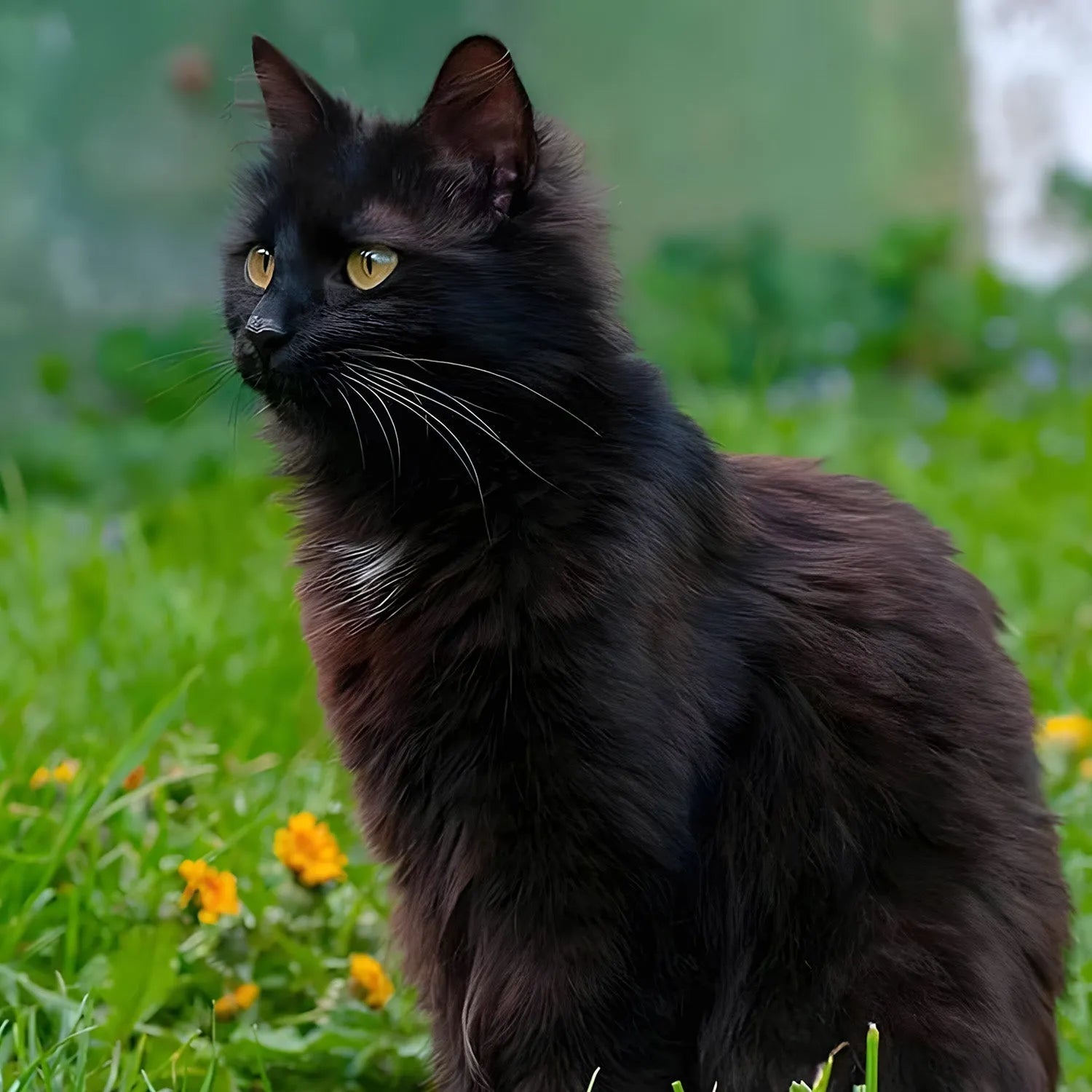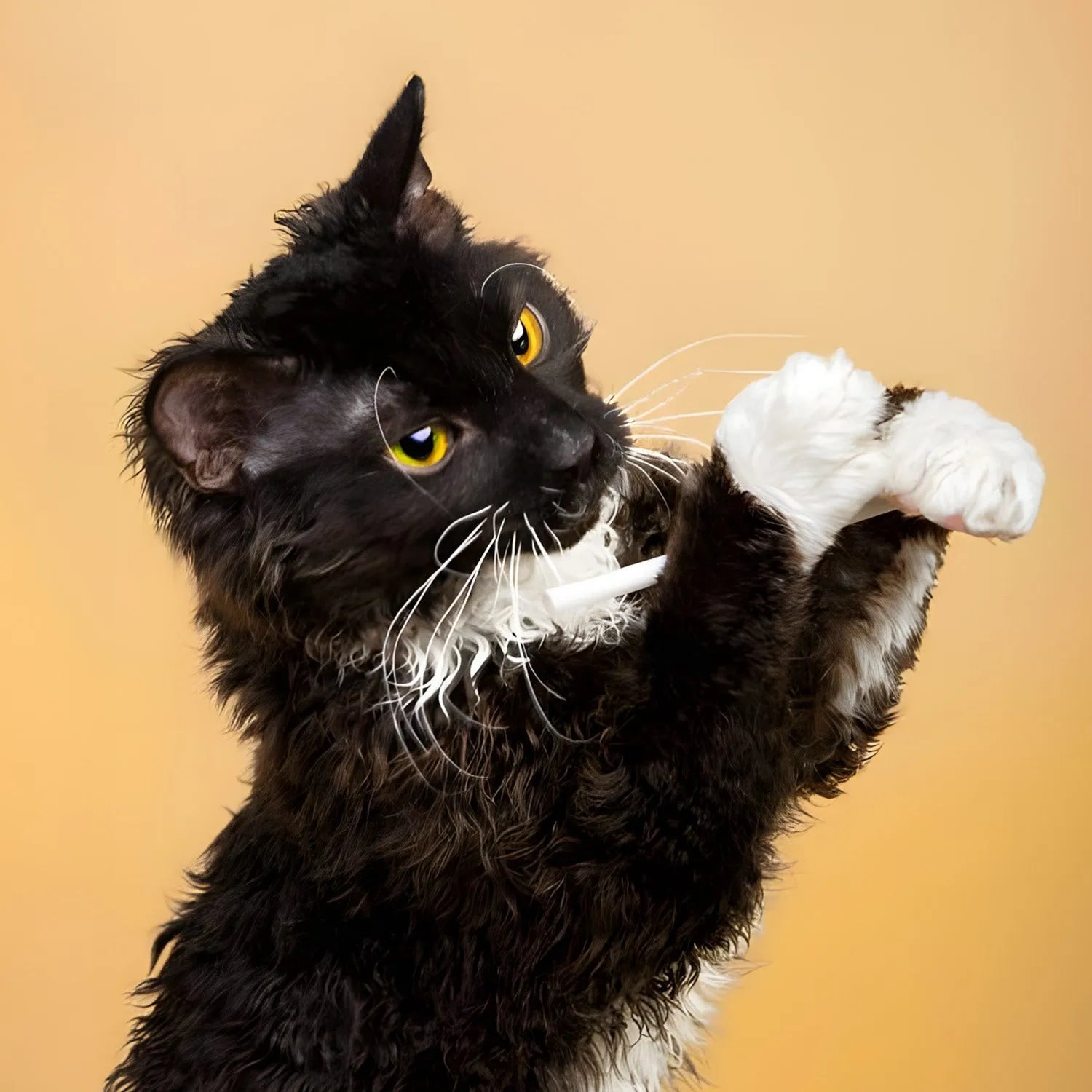British Shorthair: The Calm and Sturdy Companion
Introduction
The British Shorthair cat is one of the most iconic and well-loved breeds in the world. Known for its round face, dense plush coat, and calm demeanor, the British Shorthair is the quintessential family cat. Whether you live in a quiet home or a bustling family environment, this breed’s easygoing nature and affectionate personality make it a perfect companion. In this blog, we’ll explore the British Shorthair’s lifestyle, behavior, grooming needs, trainability, and how it interacts with humans and other pets.
Ratings (1-5)
-
Environmental Adaptability: 5
-
Food Consumption: 3
-
Need for Companionship: 4
-
Trainability: 3
-
Tolerance of Children: 5
-
Ease of Domestication: 5
History and Origins
The British Shorthair is one of the oldest cat breeds, with origins dating back to Roman times. The breed was developed from cats brought to the British Isles by Roman invaders, where they adapted to their new environment and eventually became known as British domestic cats. Over the centuries, British Shorthairs were prized for their hunting abilities, and they were bred for their robust health, sturdy build, and short, dense coat that helped protect them from the cold British climate. In the late 19th century, British breeders began refining the breed's characteristics, and the British Shorthair became recognized as a distinct breed. Today, the British Shorthair is known for its calm demeanor, round face, and plush coat, making it a popular choice for families and cat lovers alike.
Physical Characteristics and Colors
The British Shorthair is a medium to large-sized cat with a muscular, stocky build. One of the most distinctive features of the British Shorthair is its round face, which is complemented by full cheeks, large, round eyes, and a short, broad nose. The breed's coat is dense, plush, and short, giving the cat a teddy bear-like appearance. British Shorthairs come in a wide variety of colors and patterns, with the most popular being the "British Blue" (a solid blue-gray color). Other colors include black, white, cream, red, and a range of tabby and bicolor patterns. The breed’s eyes are usually gold or copper, although blue and green eyes are also possible in some coat colors.
Lifestyle and Behavior
British Shorthairs are known for their calm and easygoing nature. They are not overly active cats and are content to spend their time lounging in a favorite spot, observing their surroundings with quiet interest. Despite their laid-back demeanor, British Shorthairs are affectionate and enjoy spending time with their human companions. They are not particularly demanding of attention, making them well-suited for owners who appreciate a more independent cat. However, they are always happy to cuddle and will seek out affection when they feel like it. British Shorthairs are also known for their patience and gentleness, making them excellent companions for families with children or other pets.
Trainability and Intelligence
British Shorthairs are intelligent cats, though they are not as trainable as some more active breeds. They can learn basic commands and enjoy interactive toys, but they are less likely to engage in rigorous training sessions. They respond well to positive reinforcement, such as treats and praise, and can be taught simple tricks, though they are generally content with a more relaxed lifestyle. British Shorthairs are curious and enjoy exploring their environment, but they do so in a calm and measured way, reflecting their dignified nature. While they may not be as energetic as other breeds, they appreciate mental stimulation and enjoy puzzle toys and games that engage their minds.
Social Behavior and Human Interaction
British Shorthairs are social cats, but they tend to be more reserved than some other breeds. They form strong bonds with their human families and enjoy spending time in their company, but they are also content to spend time alone. This breed is not overly demanding of attention and is happy to relax in a quiet corner while their owners go about their daily activities. When they do seek out attention, it is usually in the form of gentle head-butts or quiet purring. British Shorthairs are not particularly vocal, but they will communicate with their owners through soft meows and purrs when they want something.
Compatibility with Children and Other Pets
British Shorthairs are excellent companions for children due to their gentle and patient nature. They are tolerant of children’s antics and enjoy interactive play, making them a great match for families. Additionally, British Shorthairs tend to get along well with other pets, including dogs, as long as they are properly introduced. Their calm and easygoing nature allows them to integrate well into multi-pet households, and they often enjoy the company of other animals as much as they do humans. British Shorthairs are known for their ability to form strong bonds not only with their human families but also with other pets in the household.
Grooming and Care
The grooming needs of a British Shorthair are relatively low due to their short, dense coat. Weekly brushing is usually sufficient to remove loose hairs and keep their coat looking shiny and healthy. Despite their plush coat, British Shorthairs do not have an undercoat, which means they shed less than some other breeds. Regular dental care, ear cleaning, and nail trimming are also important to maintain their overall health. Bathing is generally not necessary unless the cat gets particularly dirty, as British Shorthairs are generally good at keeping themselves clean.
Health and Lifespan
British Shorthairs are generally healthy cats, but like all breeds, they can be prone to certain genetic conditions. These may include hypertrophic cardiomyopathy (a form of heart disease) and polycystic kidney disease. Regular veterinary check-ups and a balanced diet are essential to maintain their health. With proper care, British Shorthairs can live up to 12-16 years. Regular monitoring and preventive care are important to ensure a long and healthy life for your British Shorthair.
Environmental Adaptability
British Shorthairs are adaptable cats that can thrive in various living environments, although they are particularly well-suited to indoor living. They are known for their resilience and can adjust well to different climates and household settings. Whether in an apartment or a house, British Shorthairs will find ways to entertain themselves and stay active. However, they do best in environments where they can receive plenty of attention and interaction from their owners. Their adaptable nature makes them well-suited to a wide range of living conditions, and they are equally comfortable as indoor cats.
Feeding Requirements
A balanced diet is crucial for maintaining the British Shorthair's health and energy levels. High-quality cat food that is rich in protein is recommended. Fresh water should always be available. Consult your veterinarian for specific dietary recommendations based on your cat's age, weight, and health needs. Monitoring their diet to prevent obesity is essential, as British Shorthairs can be prone to overeating if not properly managed.
Conclusion
The British Shorthair is a calm and sturdy breed that brings elegance and companionship to any household. Their intelligence, gentle nature, and striking appearance make them wonderful pets for families and individuals alike. If you’re looking for a cat that combines the classic charm of a teddy bear with a loving and independent personality, the British Shorthair might be the perfect fit for you.
For more information about other cat breeds and pet care tips, stay tuned to our blog!
References:
-
Baker, J. (2021). "The British Shorthair: A Calm and Sturdy Companion." *Journal of Feline Studies*, 35(3), 201-215.
-
Harris, E. (2020). "Caring for Your British Shorthair: A Comprehensive Guide." *Cat Lover’s Magazine*, July issue, pp. 30-40.
-
Moore, L. (2019). "Health and Wellness in British Shorthairs." *Veterinary Journal*, 79(2), 123-137.


